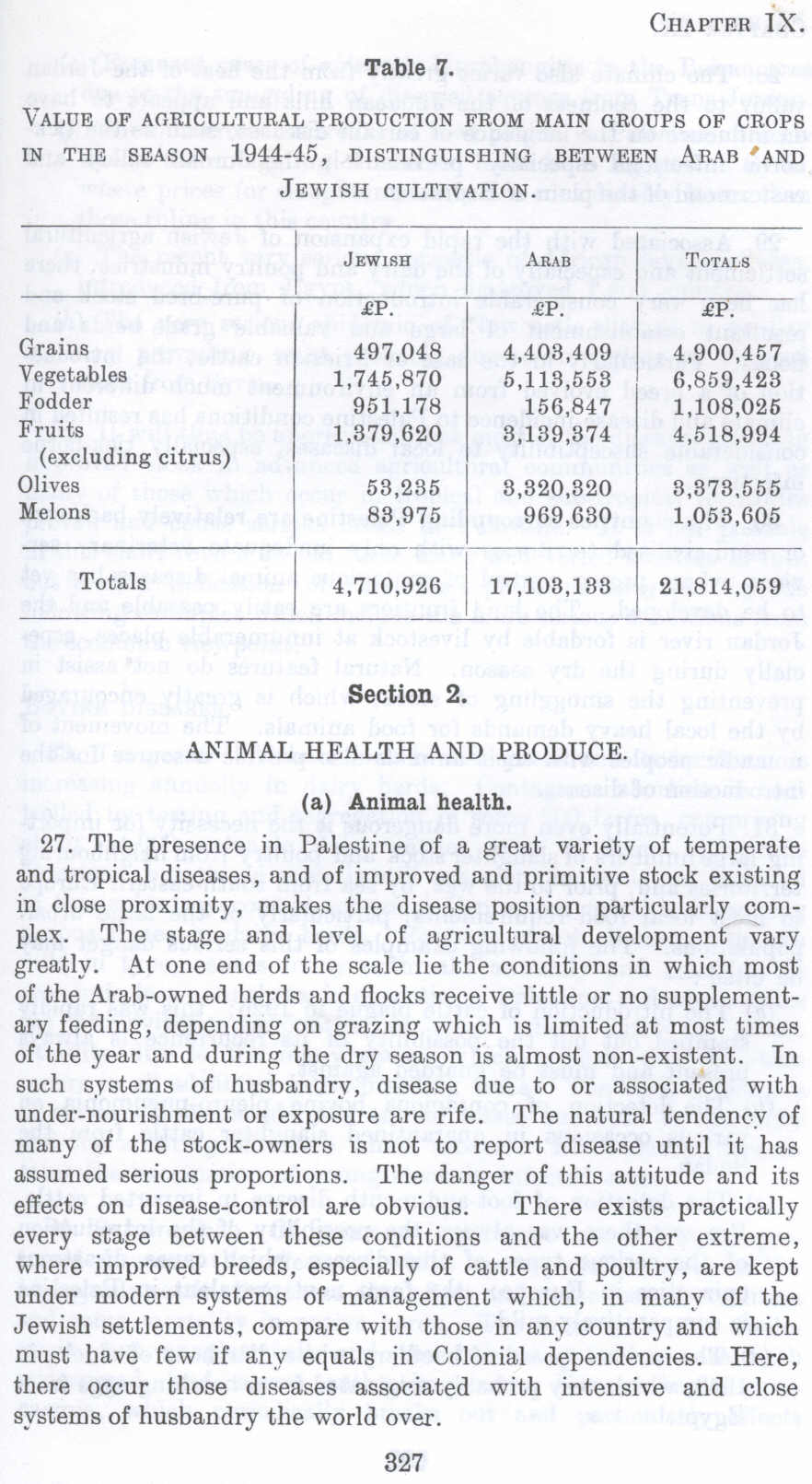Value of Agricultural Production in Palestine From Main Group of Crops By Religion 1944 - 45 before Nakba, Plus Health and Production in Palestine before 1948 (Nakba), British Mandate: A Survey of Palestine: Volume I - Page 327. Chapter IX: Agriculture: Section 1: Agriculture Production: (c) Statistical Production: Table 7: Value of Agricultural Production From Main Group of Crops By Religion 1944 - 45. . Chapter IX: Agriculture: Section 2
|
Disclaimer
The above documents, article, interviews, movies, podcasts, or stories reflects solely the research and opinions of its authors. PalestineRemembered.com makes its best effort to validate its contents.



Post Your Comment
*It should be NOTED that your email address won't be shared, and all communications between members will be routed via the website's mail server.
Table 7.
VALUE OF AGRICULTURAL PRODUCTION FROM MAIN GROUPS OF CROPS IN THE SEASON 1944-45, DISTINGUISHING BETWEEN ARAB 'AND JEWISH CULTIVATION.
I TOTALS
Grains 497,048 4,403,409 4,900,457
Vegetables 1,745,870 5,113,553 I 6,859,423
Fodder 951,178 156,847 1,108,026
Fruits 1,379,620 3,139,374 4,518,994
(excluding citrus) Olives
Melons
JEWISH
Arab
53,235 83,975
3,320,320 969,630
3,373.555 1,053,605
Totals
4,710,926
17,103,133
21,814,059
Section 2.
ANIMAL HEALTH AND PRODUCE.
(a) Animal health,
27. The presence in Palestine of a great variety of temperate and tropical diseases, and of improved and primitive stock existing in close proximity, makes the disease position particularly complex. The stage and level of agricultural development vary greatly. At one end of the scale lie the conditions in which most of the Arab-owned herds and flocks receive little or no supplementary feeding, depending on grazing which is limited at most times of the year and during the dry season is almost non-existent. In such systems of husbandry, disease due to or associated with under-nourishment or exposure are rife. The natural tendency of many of the stock-owners is not to report disease until it has assumed serious proportions. The danger of this attitude and its effects on disease-control are obvious. There exists practically every stage between these conditions and the other extreme, where improved breeds, especially of cattle and poultry, are kept under modern systems of management which, in many of the Jewish settlements, compare with those in any country and which must have few if any equals in Colonial dependencies. Here, there occur those diseases associated with intensive and close systems of husbandry the world over.
Page 327